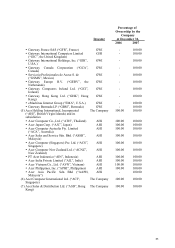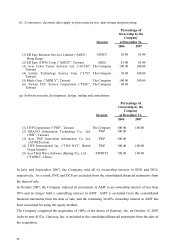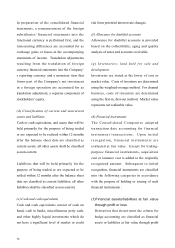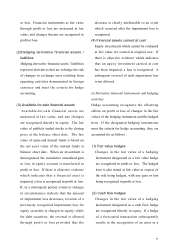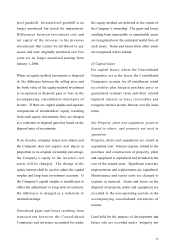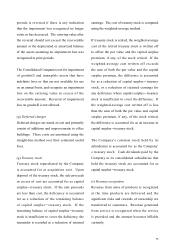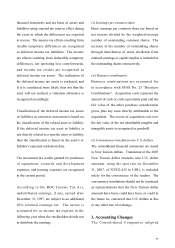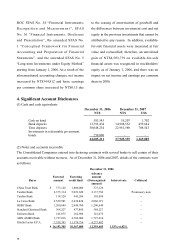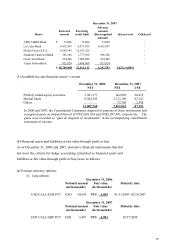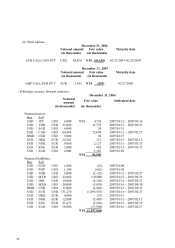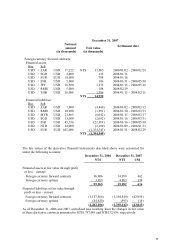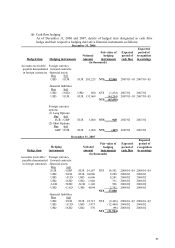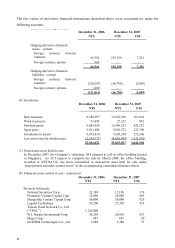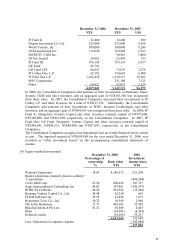Acer 2007 Annual Report Download - page 78
Download and view the complete annual report
Please find page 78 of the 2007 Acer annual report below. You can navigate through the pages in the report by either clicking on the pages listed below, or by using the keyword search tool below to find specific information within the annual report.75
periods is reversed if there is any indication
that the impairment loss recognized no longer
exists or has decreased. The carrying value after
the reversal should not exceed the recoverable
amount or the depreciated or amortized balance
of the assets assuming no impairment loss was
recognized in prior periods.
The Consolidated Companies test for impairment
of goodwill and intangible assets that have
indenite lives or that are not available for use
on an annual basis, and recognize an impairment
loss on the carrying value in excess of the
recoverable amount. Reversal of impairment
loss on goodwill is not allowed.
(p) Deferred charges
Deferred charges are stated at cost and primarily
consist of additions and improvements to ofce
buildings. These costs are amortized using the
straight-line method over their estimated useful
lives.
(q) Treasury stock
Treasury stock repurchased by the Company
is accounted for at acquisition cost. Upon
disposal of the treasury stock, the sale proceeds
in excess of cost are accounted for as capital
surplus-treasury stock. If the sale proceeds
are less than cost, the deficiency is accounted
for as a reduction of the remaining balance
of capital surplus-treasury stock. If the
remaining balance of capital surplus-treasury
stock is insufcient to cover the deciency, the
remainder is recorded as a reduction of retained
earnings. The cost of treasury stock is computed
using the weighted-average method.
If treasury stock is retired, the weighted-average
cost of the retired treasury stock is written off
to offset the par value and the capital surplus
premium, if any, of the stock retired. If the
weighted-average cost written off exceeds
the sum of both the par value and the capital
surplus premium, the difference is accounted
for as a reduction of capital surplus-treasury
stock, or a reduction of retained earnings for
any deficiency where capital surplus-treasury
stock is insufficient to cover the difference. If
the weighted-average cost written off is less
than the sum of both the par value and capital
surplus premium, if any, of the stock retired,
the difference is accounted for as an increase in
capital surplus-treasury stock.
The Company’s common stock held by its
subsidiaries is accounted for as the Company’
s treasury stock. Cash dividends paid by the
Company to its consolidated subsidiaries that
hold the treasury stock are accounted for as
capital surplus-treasury stock.
(r) Revenue recognition
Revenue from sales of products is recognized
at the time products are delivered and the
significant risks and rewards of ownership are
transferred to customers. Revenue generated
from service is recognized when the service
is provided and the amount becomes billable
currently.


